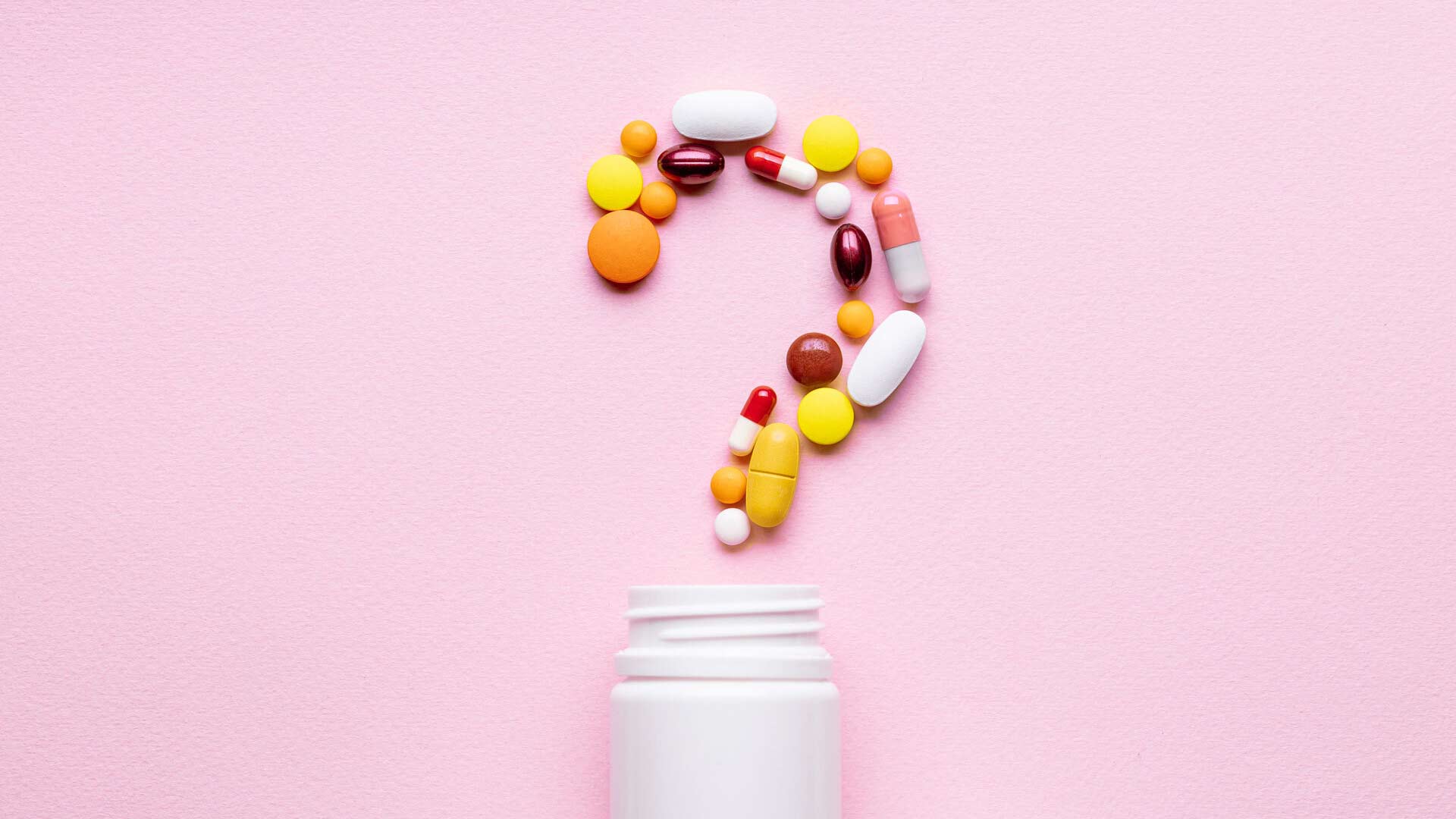
Today, Good Laboratory Practices in the pharmaceutical industry remain the foundation of reliable science, ensuring that non-clinical data used for regulatory submissions is both credible and reproducible.
In this article, we’ll clarify core concepts of GLP compliance in pharma, such as how GLP vs GMP differ, break down the core principles of Good Laboratory Practice, and explore how digital platforms like Scilife help laboratories strengthen data integrity, streamline compliance, and stay audit-ready in a modern, connected environment.
Want to dive deeper into the world of GxP? Make sure you check out our ultimate guide on GxP compliance in pharma.
Key takeaways
History of FDA Good Laboratory Practices: The scandal that led to the creation of GLP
Understanding the GLP meaning in pharma begins with understanding how and why Good Laboratory Practices were created. So, imagine this…
You work at a mid-sized pharmaceutical company in the 1970s.
Your R&D team has just developed a promising molecule that could transform treatment for thousands of patients. But time and money are running tight, and leadership pushes for rapid entry into clinical trials.
Since your team isn’t equipped for full toxicology and safety testing, you outsource them to a large, reputable lab promising fast turnaround. Three months later, the report arrives — nothing alarming.
Confident, your company submits the data to the FDA and is soon cleared for human trials.
Within weeks, severe toxicity signals emerge. The trial halts before assessing efficacy. Then, the news breaks: the toxicology lab you hired is under federal investigation for data fraud.
Investigators uncovered shocking conditions — a rodent study room infamously nicknamed “the Swamp,” where a malfunctioning watering system had flooded the floors with stagnant water. Animals drowned or decomposed in their cages while technicians waded through in rubber boots. Instead of halting studies, staff quietly replaced dead animals with untreated ones, never recording the switch.
Data were fabricated, necropsy findings rewritten, and pathology reports altered to hide evidence of harm. The lab, Industrial Bio-Test Laboratories (IBT)—one of the largest CROs in the U.S.—had falsified countless safety studies. The scandal led to criminal convictions, halted development programs, and massive retesting efforts.
Most importantly, the scandal at IBT and other major cases of data fraud led to the creation of Good Laboratory Practices (GLP), a framework designed to restore trust in non-clinical research and ensure data integrity for every safety study.
Why are regulators focusing on data integrity?
What is GLP in pharma?
GLP meaning in pharma according to the OECD:
“Good Laboratory Practice (GLP) is a quality system concerned with the organizational process and the conditions under which non-clinical health and environmental safety studies are planned, performed, monitored, recorded, archived and reported.”
At its core, GLP in pharma is about trust, ensuring every piece of non-clinical data is scientifically sound, traceable, and defensible. It provides the framework regulators rely on to evaluate product safety before human exposure.
GLP vs GMP: How they work together
Although both GLP and GMP ensure product safety and reliability, they apply at different stages of the development process and serve different purposes.
Understanding GLP vs GMP is essential for grasping how quality is maintained from early research through commercial manufacturing.

Figure 1. Overview of the main stages of new product development and the applicable regulatory framework at each stage. R&D: Research and Development. GLP: Good Laboratory Practices. GCP: Good Clinical Practices. GMP: Good Manufacturing Practices.
Good Laboratory Practices governs non-clinical studies that support regulatory submissions for new medicinal products. These include toxicology, safety pharmacology, and biocompatibility studies. The goal of GLP in pharma is to ensure these studies are trustworthy, reproducible, and defensible so that regulators can rely on their data when evaluating a product’s safety.
GMP (Good Manufacturing Practice) begins once a product enters clinical trials and materials are manufactured for clinical use. It focuses on the consistency and quality of the manufacturing process—ensuring that every batch is produced and controlled according to predefined standards.
In short, GLP vs GMP:
- GLP = integrity of non-clinical data
- GMP = quality of the manufacturing process
Both systems are essential pillars of pharmaceutical quality — one builds scientific reliability, the other ensures reproducibility in production.
Principles of Good Laboratory Practice (GLP)
The OECD Principles of Good Laboratory Practices (GLP) define how any study that falls under GLP requirements must be planned, conducted with transparency, consistency, and rigor.
These principles form the foundation of GLP compliance and can be grouped into three main categories: personnel, Quality Assurance system, and supporting systems.

1. Personnel: Roles, responsibilities, and oversight
Competent, trained, and accountable personnel are the foundation of every Good Laboratory Practices environment and are essential for maintaining GLP compliance.
Management accountability: Facility management must provide adequate personnel, facilities, and resources to operate in compliance with GLP. They designate key roles such as the Study Director, Principal Investigator(s) (if needed), and Quality Assurance (QA) personnel, and assure that every team member is qualified and trained for their functions. They also ensure that a robust QA program is implemented in line with OECD GLPs.
Study Director oversight: The Study Director serves as the single point of control for each study and holds ultimate responsibility for its scientific conduct and GLP data integrity. They ensure the approved study plan is followed, deviations are justified, and raw data are accurately recorded and traceable. Ultimately, they are accountable for the proper conduct of the study and for ensuring that the final report reflects the data generated.
Independent Quality Assurance: QA personnel operate independently from study conduct — including from the Study Director — to verify GLP compliance through scheduled inspections, audits, and report reviews. Their primary role is to detect and prevent non-conformances, ensuring each study is performed and documented in line with Good Laboratory Practices.
Staff competence: Every team member must follow SOPs, maintain accurate records, and safeguard both their health and the integrity of the study.
2. Quality Assurance System: Data integrity and traceability
A robust QA system ensures that every Good Laboratory Practices study is conducted, recorded, and reported with full transparency and traceability, which is fundamental to GLP compliance.
Study conduct and GLP data integrity: Every study begins with an approved written plan. All raw data must be recorded promptly and legibly, and any modification must remain traceable to demonstrate ongoing GLP compliance.
Independence of QA: QA must be independent from the Study Director and Principal Investigators and cannot be involved in study conduct.
Standard Operating Procedures (SOPs): Each activity must follow approved SOPs. Any deviation must be documented and justified.
Reporting and archiving: Final reports must accurately reflect the study data. Plans, raw data, and samples must be securely archived for the required retention period.
Test systems: All physical, chemical, or biological systems must be maintained under controlled conditions to prevent contamination or data compromise.
Test and reference items: All materials must be properly identified, stored, and traceable. Their purity, stability, and composition must be documented to guarantee data reliability.
In essence, the GLP quality system guarantees that every result can be traced from experiment to report — protecting scientific validity and regulatory trust.
3. Supporting systems: Infrastructure and equipment
Supporting systems form the physical and technical foundation for Good Laboratory Practices operations.
Facilities: Laboratories must be designed to prevent cross-contamination and mix-ups. Dedicated areas should include separate spaces for the receipt and storage of test and reference items, test system rooms, archival areas, and waste management facilities. This physical separation minimizes the probability of mix-ups and ensures that every study is conducted under controlled conditions in line with Good Laboratory Practices. Environmental controls (temperature, humidity, ventilation, and pest management) must be documented and monitored to avoid compromising study integrity.
Apparatus, materials, and reagents: Equipment must be suitable for its intended use, properly maintained, and regularly calibrated according to documented procedures. All materials should be clearly labeled with their identity, storage conditions, and expiry date to prevent confusion or degradation. Computerised systems are equally critical; they must include audit trails, restricted access, backup procedures, and validation appropriate to system risk.
How digitalization simplifies GLP compliance
You’ve been there, a desk buried under thick folders, sticky notes marking SOP corrections, and spreadsheets that never quite match the training logs.
The audit clock is ticking, and you’re chasing signatures, proof of training, and missing records. GLP compliance feels less like science and more like survival.
Now, imagine that same process — automated, searchable, and fully traceable.
Every SOP version, training record, and deviation is linked to its source. Every change is timestamped. Digitalization turns the chaos of paper documentation into a transparent, connected system that works for you, not against you.
Validated GLP software platforms record activities in real time, generate audit trails automatically, and keep all documentation current. They simplify essential elements of any GLP compliance checklist, such as document control, training management, deviation tracking, and data traceability. QA teams can instantly see where a study stands — no binders, no backtracking, no panic.
When laboratories go digital with tools like Scilife’s eQMS, compliance doesn’t become automatic — but it becomes much easier to achieve, maintain, and demonstrate.
If you need help with GLP compliance…
The failures of the 1970s showed what happens when oversight and data integrity are neglected. The principles of Good Laboratory Practices were designed to rebuild confidence in science, and they remain just as critical today.
But while the purpose of GLP hasn’t changed, the tools have. Paper-based systems slow teams down and expose them to risk. Digitalization restores efficiency and transparency, transforming compliance into a living system where every action is documented, traceable, and inspection-ready.
At Scilife, we help pharmaceutical and biotech organizations make this transition seamlessly. Our validated, cloud-based platform makes GLP compliance easy by centralizing documentation, training, and audit readiness within a validated and well-governed GLP quality system.
FAQs
Is GLP part of ISO 17025?
The primary goal of GLP is to generate reliable non-clinical safety data that allow regulators to evaluate whether a product can safely progress to human studies. ISO/IEC 17025, instead, is a voluntary accreditation standard proving the technical competence of testing and calibration laboratories, overseen by national accreditation bodies.
While ISO 17025 can apply to physicochemical testing, it is not suitable for biological or in-vivo studies and is typically used by laboratories providing testing or calibration services to external clients.
What documentation is required for GLP compliance?
How do you implement GLP in a laboratory?
Laboratories must develop and maintain Standard Operating Procedures (SOPs), ensure that facilities and equipment are appropriate and well-maintained, train personnel, and uphold strict documentation and data integrity practices.
Digital tools such as QMS, ELN, and LIMS can simplify compliance by improving traceability, version control, and audit readiness.
What are the GLP requirements for laboratories?
Laboratories must also ensure secure archiving, audit-ready documentation, and continuous oversight of studies from initiation to final reporting — all to guarantee GLP data integrity and regulatory reliability.
What are the five main principles of GLP?
- Defined organization and responsibilities — clear roles for management, the Study Director, and Quality Assurance personnel.
- Comprehensive SOP system — standardized procedures ensuring consistency and reproducibility.
- Qualified and trained personnel — staff must be competent and properly instructed for their assigned tasks.
- Suitable facilities and equipment — laboratories must be appropriately designed, maintained, and equipped to prevent errors or contamination.
- Data integrity and QA oversight — all data must be traceable, securely archived, and subject to independent Quality Assurance audits to verify compliance.
Who regulates GLP compliance?
Each OECD member (and adhering country) appoints a national GLP monitoring authority responsible for inspecting laboratories, verifying adherence to GLP principles, and issuing or revoking compliance certifications.
In the United States, GLP compliance is monitored by the FDA for non-clinical safety studies supporting medicinal products and by the EPA for environmental and toxicology studies. Other examples include, MHRA in the United Kingdom and national competent authorities coordinated by the European Medicines Agency (EMA) across the EU.
These authorities conduct routine and for-cause inspections to ensure that non-clinical safety studies submitted for regulatory approval meet internationally recognized GLP standards.
What are the differences between GLP, GCP, and GMP?
- Good Laboratory Practice (GLP) governs non-clinical safety studies, ensuring that data used to assess a product’s safety before human exposure is reliable and traceable.
- Good Clinical Practice (GCP) applies to clinical trials involving human subjects, focusing on ethical standards, patient safety, and the credibility of clinical data.
- Good Manufacturing Practice (GMP) regulates the production and quality control of medicinal products, ensuring consistency and compliance during manufacturing.








